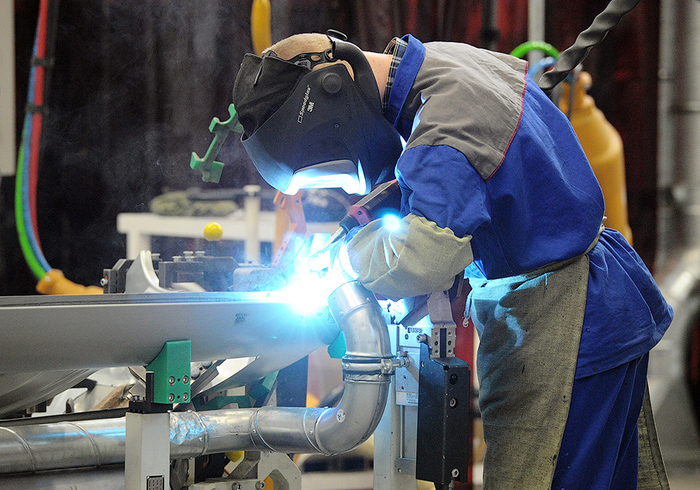ASTANA – As a result of the state programme of accelerated industrial and innovative development, Kazakhstan is actively increasing exports. Investments in processing industries are increasing as well, which is quite profitable due to improved prices for exported products in the world market.
The volume of foreign trade turnover in January-August reached $59.8 billion, 21.6 percent more than the same period of 2017. The export volume in the reporting period reached $39.1 billion, a 28.2-percent increase compared with January-August of last year. The volume of imports also showed a 10.8-percent increase to $20.7 billion, reported the Ministry of National Economy statistics committee.
August prices for Kazakh exported goods rose by 3.5 percent compared to the previous month. Since December, the prices of exported goods increased by 13.3 percent, while prices for imported goods increased only by 1.3 percent and 4.5 percent respectively.
During the reporting period, hikes in export supply prices were recorded for oil (19.8 percent), manganese ores (19.5 percent), copper ore (17.6 percent), copper (14.9 percent), natural gas (13.6 percent), ferroalloys (12.8 percent), iron ores (10.7 percent), rolled ferrous metals (10 percent), coal (8.5 percent) and aluminium (0.2 percent), while the price of zinc decreased by 11.1 percent. Price growth was noted for barley (14.8 percent), cotton (6.5 percent) and wheat (6.1 percent), although the price of wool dropped by 6 percent.
Investments in processing industries grew by 42 percent during the year, reported Energyprom. The share of the manufacturing industry reached almost 20 percent. In the first eight months, processing industries have already received 745.9 billion tenge (US$2 billion) in investments, 41.8 percent more than the previous year.
Of the capital investments, 44.2 percent were made in Shymkent, which recently received the status as the country’s third city of national importance. The Karaganda (9.9 percent) and Atyrau (7.5 percent) regions are also among the leaders in attracting processing industry investments.
In addition to its investment growth, the processing industry share is growing in the country’s total capital investment. The weight of the manufacturing sector in the total investment portfolio for January-August reached 11.7 percent. The figure was 11 percent in 2017 and 7.5 percent in 2010, before active industrial-innovative development was promoted as part of the state programmes.
The key investment magnets in the manufacturing industry are gasoline and diesel production, as well as other refined petroleum products and coke (49.8 percent of capital investments), metallurgy (20.4 percent) and the food industry (11.2 percent). The three leading areas accounted for more than 80 percent of the sector’s capital investment.



